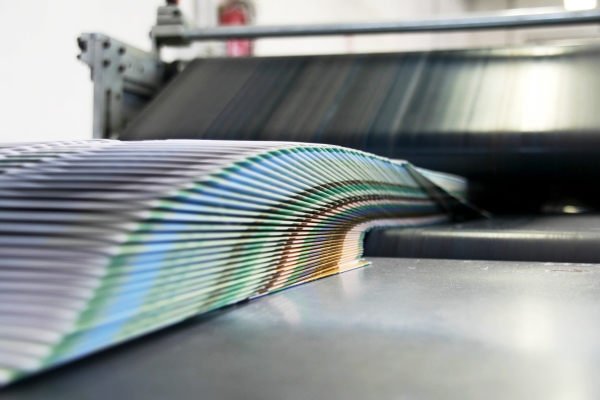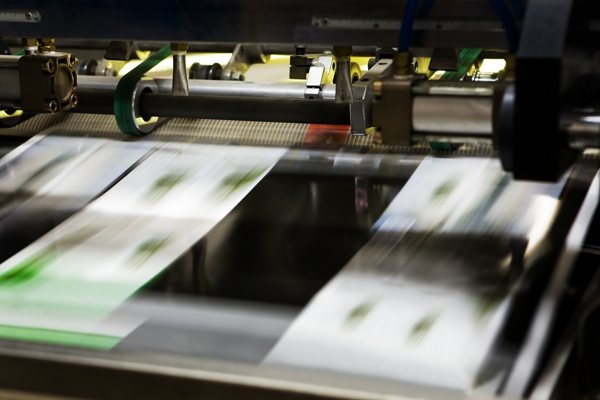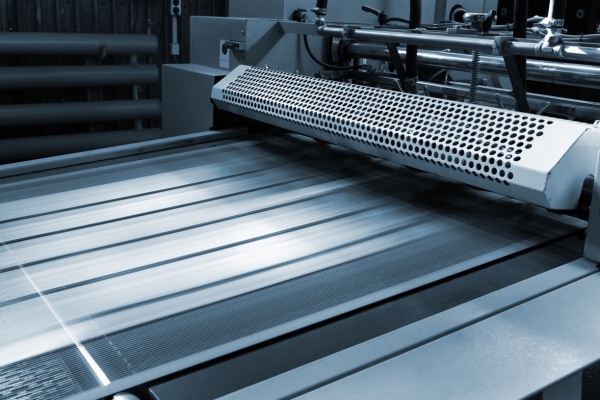Brazil Industry: Overview of the Brazilian Printing Industry Sector
Fabio Arruda Mortara, President of ABIGRAF Nacional (Brazilian Printing Industry Association) and SINDIGRAF SP (Sao Paulo State Printing Industry Union)
Fabio Arruda Mortara gives his evaluation of the printing industry in Brazil and talks about the role of ABIGRAF and SINDIGRAF, mentioning achievements, challenges and his vision for the futre of the industry.
Interview with Fabio Arruda Mortara, President of ABIGRAF Nacional (Brazilian Printing Industry Association) and SINDIGRAF SP (Sao Paulo State Printing Industry Union)
How would you evaluate the printing industry in Brazil?
The printing industry in Brazil appeared in 1808 when the Emperor from Portugal came here running away from Napoleon’s troops.
This year there will be the contest “As Crianças que Leram Mais” (The children that read the most), which is a project we are very proud of. It is fantastic to see the involvement of the community and of the Mayor every time we open a library. This one is a project in partnership with ABIGRAF.
Compared to other countries in Latin America it appeared late. The first company to be founded was the “Imprensa Imperial” (Imperial Printing).
From 1808 until now (206 years), the printing industry has grown a lot, going through technological changes and huge dissemination in Brazil. 50 years ago we could only find printing industries in big Brazilian cities and nowadays you can find high quality printing industries in all parts of the country. We can proudly say we have a printing industry with substantial investments (more than 1.2 billion dollars per year in new equipment).
Brazil is very well equipped in terms of this industry and has been able to win some contests, which were highly sophisticated.
Could you present the Association in terms of the fields of intervention and key points?
50 of the 206 years of the printing industry existence involved the participation of entities.
90 years ago the first trade union appeared. SINDIGRAF (Sindicato da Indústria Gráfica de Sao Paulo – Sao Paulo State Printing Industry Union) is one of those trade unions of which I’m also the chairman. With the development of the trade unions and the need of a political and business integration, the graphical industry thought it would be better to create a Brazilian graphical industry association and in 1965 ABIGRAF (Associação Brasileira da Indústria Gráfica – Brazilian Printing Industry Association) was created. This association represents the interests of more than 20,000 graphic companies and more than 225,000 employees.

What is the general purpose of SINDIGRAF?
A former Brazilian dictator president called Getúlio Vargas created trade unions in Brazil. You had employers’ trade unions and employees’ trade unions, which is something that happens only in Brazil and is thus difficult to explain to foreigners.
Our trade union was founded 90 years ago and it covers more than 90% of the State of Sao Paulo. In the course of its history, it was able to facilitate several projects in the graphic industry. SINDIGRAF is proud to support and sponsor several activities of ABTG (Associação Brasileira de Tecnologia Gráfica – Brazilian Association for Graphic Technology), which is our association that takes care of graphic technology. All Brazilian regulations for the graphic industry were developed within ABTG in partnership with ABNT (Associação Brasileira de Normas Técnicas – Brazilian Association for Technical Regulations) and were fully funded by SINDIGRAF. There are more than 60 regulations already developed.
SINDIGRAF has acted throughout its history with the objective to benefit the country and, of course, the graphical industry. One important project of SINDIGRAF is the remodeling or reconstruction and the implementation of libraries in cities in the interior of the state, where they do not exist or have been closed. We have already opened 15 libraries and during 2014 we want to open two more.
This year there will be the contest “As Crianças que Leram Mais” (The children that read the most), which is a project we are very proud of. It is fantastic to see the involvement of the community and of the Mayor every time we open a library. This one is a project in partnership with ABIGRAF.
Another important project is to command the employers’ trade unions’ negotiations with the employees’ unions to try to look for advances that are consistent with the economic reality of the companies and with the work reality. Just in Sao Paulo, we have more than 90,000 employees within the sector.
What actions in particular have you undertaken to support the graphical industry in Brazil?

Regarding institutional matters, ABIGRAF represents the industry in all bodies, like, for example CNI (Confederação Nacional da Indústria – National Industry Confederation), the Executive, Legislative and Judiciary powers, at federal, municipal and state level. We have a representative in Brasília and are very close with all industry federations.
Regarding the marketing aspects, ABIGRAF created a few years ago a campaign in which it is stated that the printing paper is of controlled origins and 100% from planted forests. On April 7 we will integrate Brazil in a worldwide campaign called “Two Sides”. This campaign says that the printing industry has an environmental history to tell, and they try to show with concrete data that printed communication is sustainable. It has an attached campaign called “Print Power” that shows the strength of printed communication. If you receive an email, a SMS, etc., it has a fugacious character while a printed communication is much more permanent – no one wants a university diploma on his or her iPads or laptops. There are innumerous printed documents that have an intrinsic value.
A third vector is agglutination: ABIGRAF Nacional has 22 regional ABIGRAFs, each one of them with their own reality. ABIGRAF Nacional has to pacify and to bring interests together.
Can you speak about the greatest successes from ABIGRAF?
ABIGRAF, always working in partnership with SINDIGRAF, has been able to achieve some important advances. More recently, I would emphasize 5 important successes:
– The creation of the Paper, Graphic and Packaging Productive Chain Committee, which is supported by FIESP, but that agglutinates 36 entities, to discuss the productive chain issues. On April 7th we’ll have our first meeting.
– The National Meeting of the graphic trade unions, where we had 30 trade unions discussing labor and employers issues.

– The non-renewal of the surcharge on the importation of some inputs – 6 types of paper were subject to surcharge in 2012 and after a long battle we were able to convince the Government not to renew that surcharge.
– Tax relief of the packaging sector’s payroll duties for two years.
– The BNDES (Banco Nacional de Desenvolvimento Econômico e Social – Brazilian Development Bank) credit card now may be used by small companies to purchase printed packages, thus stimulating the sector.
Which are the Association’s challenges?
The first challenge is the survival of the entity. The second challenge is to professionalize the entity. The third challenge is to represent properly its members, to search ways to stimulate business and create business opportunities.
What is your perception about the ease of doing business in Brazil?
I think there is a good environment in our sector. A good proof of that is the investment made by big companies in Brazil. A foreign company with office in Chicago controls the biggest publishing company and the biggest notebooks manufacturer.
AlphaGraphics, an American network, has successfully entered Brazil, operating small to medium size graphic companies.
The environment is favorable although the CNPJ (General Taxpayers’ Registry) is hard to get and even harder to annul, the Labor legislation is complex, the labyrinth of tax legislation is very complex, making it a little hostile.

What is your perspective for the sector in 2 or 3 years from now?
On the packaging sector, there is an enormous potential.
On the promotional sector, you have a change, where the catalogs and the listings do not play such a relevant role any more, and outdoor media, signs, points of sales media (displays, promotional material) are substituting them. All of that with state-of-the-art technology – the internet has helped the graphical industry to communicate, to receive archives, to transfer archives from one place to another at a worldwide level. If, on one hand, the Internet poses a threat, on the other hand, it represents an amazing opportunity.
What would you like to achieve with ABIGRAF in 2 years’ time?
Two years from now, we will host the Olympic Games. It will be a very important year for Brazil and the graphical industry hopes to have an important participation in it.
The Olympic Games bring exposure, tourists and business for gastronomy, for the hotel business, for the transport sector, etc. In almost all of these sectors, we are almost certain there will be a need for printed material.
ABIGRAF’s perspective is very optimistic.
Is the same thing happening this year with the World Soccer Championship?
All we said about 2016 is valid for this year with the World Soccer Championship.
What would be your message for a potential national or international investor?
We have a very well equipped graphical industry that has a very important role in terms of environment being very involved with sustainability. Our paper comes from safe and well-known sources that are certified.
Our message to a potential investor is that he or she has to come very well equipped, because there is a healthy, competitive and modern graphical industry.
FAIR USE POLICY
This material (including media content) may not be published, broadcasted, rewritten, or redistributed. However, linking directly to the page (including the source, i.e. Marcopolis.net) is permitted and encouraged.